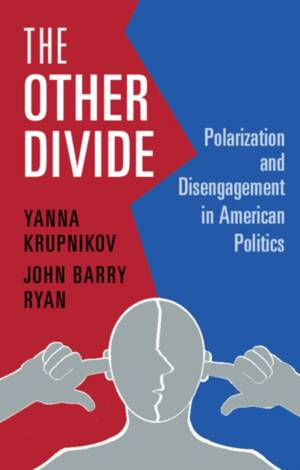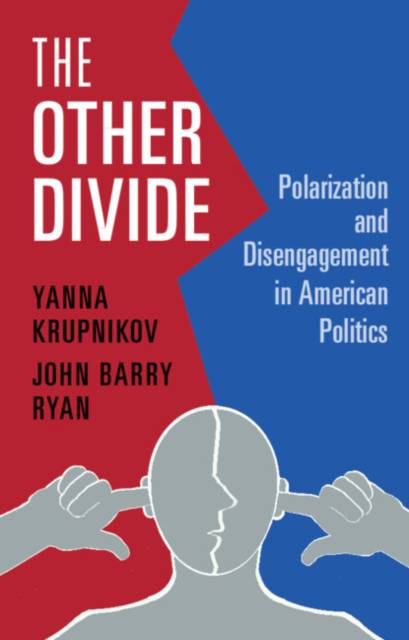
Door een staking bij bpost kan je online bestelling op dit moment iets langer onderweg zijn dan voorzien. Dringend iets nodig? Onze winkels ontvangen jou met open armen!
- Afhalen na 1 uur in een winkel met voorraad
- Gratis thuislevering in België vanaf € 30
- Ruim aanbod met 7 miljoen producten
Door een staking bij bpost kan je online bestelling op dit moment iets langer onderweg zijn dan voorzien. Dringend iets nodig? Onze winkels ontvangen jou met open armen!
- Afhalen na 1 uur in een winkel met voorraad
- Gratis thuislevering in België vanaf € 30
- Ruim aanbod met 7 miljoen producten
Zoeken
€ 122,95
+ 245 punten
Uitvoering
Omschrijving
There is little doubt that increasing polarization over the last decade has transformed the American political landscape. In The Other Divide, Yanna Krupnikov and John Barry Ryan challenge the nature and extent of that polarization. They find that more than party, Americans are divided by involvement in politics. On one side is a group of Americans who are deeply involved in politics and very expressive about their political views; on the other side is a group much less involved in day-to-day political outcomes. While scholars and journalists have assumed that those who are most vocal about their political views are representative of America at large, they are in fact a relatively small group whose voices are amplified by the media. By considering the political differences between the deeply involved and the rest of the American public, Krupnikov and Ryan present a broader picture of the American electorate than the one that often appears in the news.
Specificaties
Betrokkenen
- Auteur(s):
- Uitgeverij:
Inhoud
- Aantal bladzijden:
- 250
- Taal:
- Engels
Eigenschappen
- Productcode (EAN):
- 9781108831123
- Verschijningsdatum:
- 20/01/2022
- Uitvoering:
- Hardcover
- Formaat:
- Genaaid
- Afmetingen:
- 152 mm x 229 mm
- Gewicht:
- 616 g

Alleen bij Standaard Boekhandel
+ 245 punten op je klantenkaart van Standaard Boekhandel
Beoordelingen
We publiceren alleen reviews die voldoen aan de voorwaarden voor reviews. Bekijk onze voorwaarden voor reviews.











